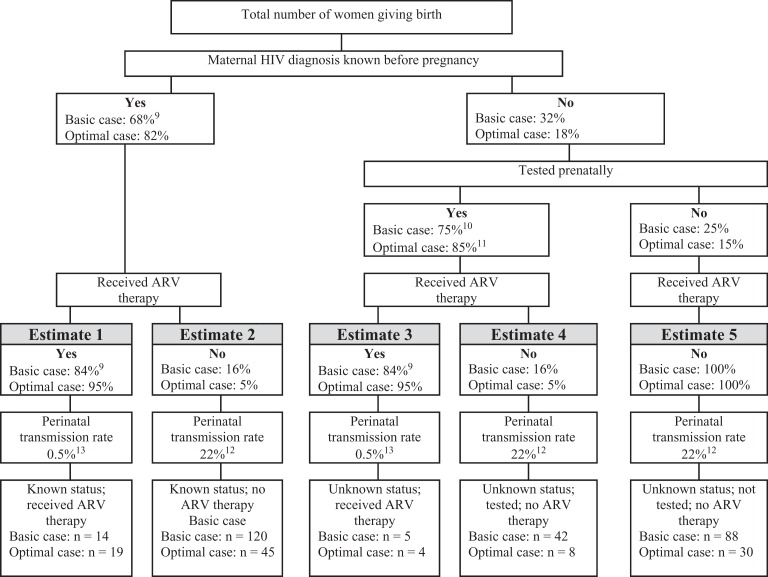Figure.
Estimating the number of newborns with HIV under “basic” and “optimal” uptake of preventive interventions, based on the number of women with HIV giving birth, United States, 2008-2014. This figure illustrates a method to validate an estimated number of women with HIV delivering infants against a known number of infants born with HIV infection in a given year, incorporating what is known about women’s knowledge of their HIV status before pregnancy, the rate of prenatal HIV testing, the uptake of antiretrovirals (ARVs) for maternal treatment and perinatal prophylaxis, and the mother-to-child HIV transmission rates when ARVs are used or not used. For each factor, there is a “basic” and an “optimal” value. The basic case used established data from the largest sources available (eg, the Centers for Disease Control and Prevention’s Enhanced Perinatal Surveillance).9 The optimal case used best-case estimates (ie, estimates of available data, the best adherence to recommended practice), most of which were from states or cities. Of the women with HIV delivering infants in a given year, the number of infants with infection depends on the proportions of women with various combinations of these values. The 5 “estimates” in the bottom row of boxes are those infants. For example, estimate 1 contains the number of infants with infection born to mothers whose HIV infection status was known before pregnancy and who took ARVs. The total number of infants with infection is the sum of the numbers in the 5 boxes. In this case, the number of infants born with infection is based on 5000 women with HIV with live births in a particular year.

